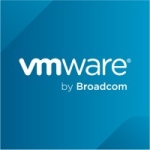Currently, we are building a visibility dashboard which allows our level-1 and level-2 engineering teams to actually look at the events, and be able to designate which ones are critical, which are important. It alerts them. They are able to simply look at a dashboard to be able to predict and resolve issues.
The CA tools allow to me to get into detailed transactions for custom ranking, and be able to make predictions. It also gathers data. Some other tools may be good at one area, but not good overall, including the mainframe.
CA has been very famous for the mainframe. I think that's actually the edge, by the way, for CA products, as there are many, many dotcom products that don't touch mainframes. I think that CA should still keep that.
The area where CA is changing is, I'll give you an example. The fresh technology should have been out a long time ago. But it appears to be we're catching up on the UIM, because Microsoft basically says they are not going to support the fresh, starting next year. That means they are a little bit behind on the waves in the architecture, etc. I think that can be improved.
Another thinking is, if the developer can get to the level-1 engineer level, they will develop a better product. I suggest the developers at CA really work as a level-1 engineer, because then you have a different sort.
Very good. The CA UIM is a very solid product. We love the simplicity of the robots and the agent installation and upgrading, because you can just do it right at your central station without rebooting the remote workstations or servers. The APM allows us to have inside-application analytics, and very seldom do we need to reboot, etc.
The scalability side for the UIM is pretty solid. As long as you set up your database right, you should be able to handle, for example, $150,000 transactions.
APM, currently, our organization is moving to the cloud, so we have lots more APM analytics, etc., so we're going to see how that's going to scale up.
I like the old dashboard - I'm just going to be very open. The old dashboard allow me to create a case and be able to get my products, without going through some of the current things that are going on.
I still like the old, for example, CA UIM support, where you can download directly through the UIM portal without going through extra steps. So I think that can be simplified.
When selecting a vendor, the reputation is important. One of the things that we have been thinking is, how many of these dotcom vendors will exist three years from today? You see AppDynamics are acquired by Cisco, you've got other vendors. Almost every week, some of these companies disappear. CA has been here for a long time, and we think that's the reputation. We definitely want CA to exist, definitely three years from today, and think that's helped.
The second area is the support. I think CA, has great people.
On pricing, CA is very competitive. I think that's going to help in the long run.
It covers from mainframe, all the way to dotcom, for example. CA currently covers Amazon, Microsoft Azure, Office 365 monitoring. They're getting to that. We notice it, we immediately install these probes as they become available from CA.
We think the stability of this product needs to be a little stronger on these newer products. We do suggest that CA keep it up in their area, because CA has mainframe to handle already. Now they want to expand into these other horizons. The addition of these products is going to help CA to sustain. The overall coverage of the product, not just in one area. Open source is very important, and we're looking to open source on all these too.
CA tools are great. The technical people I work with are great, on each product. On a one to 10 scale I will give it about eight. Now, there's a reason why I say eight, because I really like to work with the technical folks. So when CA approaches me, I hope they approach me from the helping us perspective, not trying to sell me another product. I think this is so important.
That natural evolution comes when you, yourself, are technical. When you are technical, you are able to talk the sales language, and then it will come to the sale. Sales come very naturally as part of technical. I think that should be your overall coverage, not just one person knowing one area. It should be, you should have a master architect, master chief, who knows about every single product, and deal with it.














